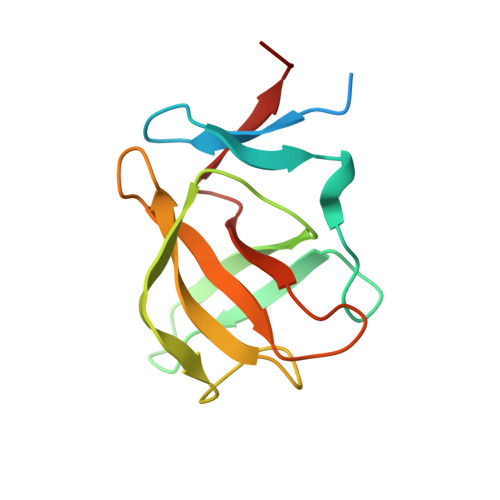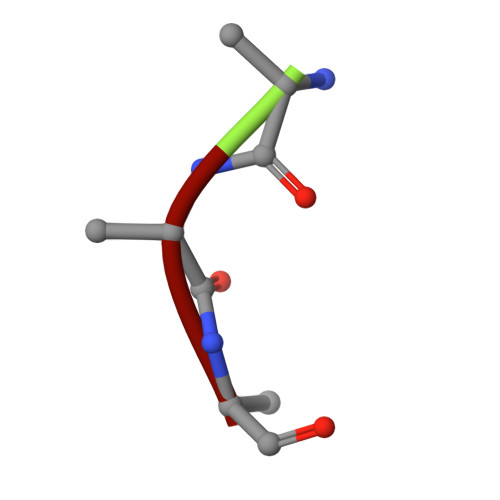De-Novo Design of Cereblon (CRBN) Effectors Guided by Natural Hydrolysis Products of Thalidomide Derivatives.
Heim, C., Pliatsika, D., Mousavizadeh, F., Bar, K., Hernandez Alvarez, B., Giannis, A., Hartmann, M.D.(2019) J Med Chem 62: 6615-6629
- PubMed: 31251063
- DOI: https://doi.org/10.1021/acs.jmedchem.9b00454
- Primary Citation of Related Structures:
6R0Q, 6R0S, 6R0U, 6R0V, 6R11, 6R12, 6R13, 6R18, 6R19, 6R1A, 6R1C, 6R1D, 6R1K, 6R1W, 6R1X - PubMed Abstract:
Targeted protein degradation via cereblon (CRBN), a substrate receptor of an E3 ubiquitin ligase complex, is an increasingly important strategy in various clinical settings, in which the substrate specificity of CRBN is altered via the binding of small-molecule effectors. To date, such effectors are derived from thalidomide and confer a broad substrate spectrum that is far from being fully characterized. Here, we employed a rational and modular approach to design novel and minimalistic CRBN effectors. In this approach, we took advantage of the binding modes of hydrolyzed metabolites of several thalidomide-derived effectors, which we elucidated via crystallography. These yielded key insights for the optimization of the minimal core binding moiety and its linkage to a chemical moiety that imparts substrate specificity. Based on this scaffold, we present a first active de-novo CRBN effector that is able to degrade the neo-substrate IKZF3 in the cell culture.
Organizational Affiliation:
Department of Protein Evolution , Max Planck Institute for Developmental Biology , Max-Planck-Ring 5 , 72076 Tübingen , Germany.


















